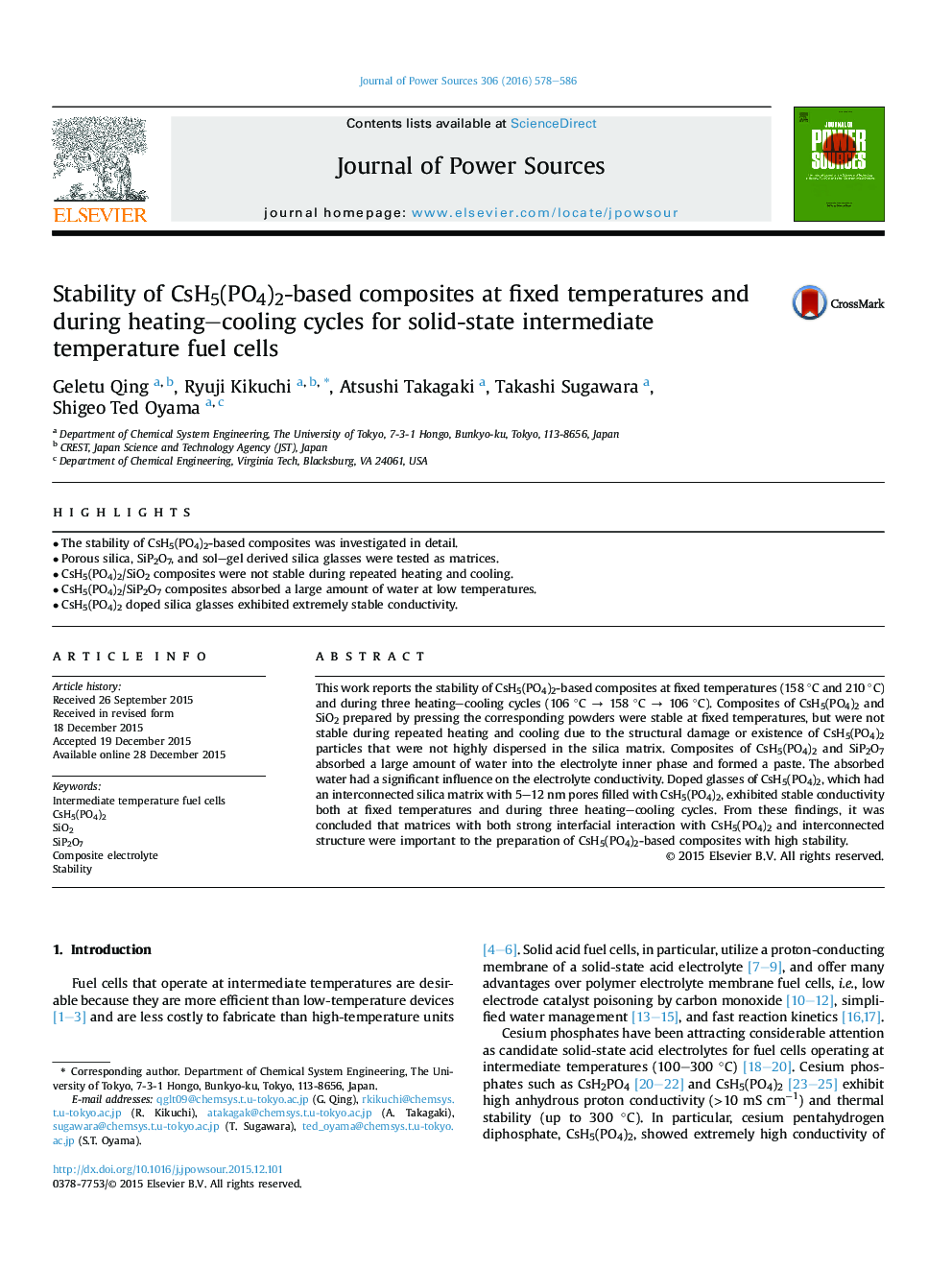| Article ID | Journal | Published Year | Pages | File Type |
|---|---|---|---|---|
| 1292342 | Journal of Power Sources | 2016 | 9 Pages |
•The stability of CsH5(PO4)2-based composites was investigated in detail.•Porous silica, SiP2O7, and sol–gel derived silica glasses were tested as matrices.•CsH5(PO4)2/SiO2 composites were not stable during repeated heating and cooling.•CsH5(PO4)2/SiP2O7 composites absorbed a large amount of water at low temperatures.•CsH5(PO4)2 doped silica glasses exhibited extremely stable conductivity.
This work reports the stability of CsH5(PO4)2-based composites at fixed temperatures (158 °C and 210 °C) and during three heating–cooling cycles (106 °C → 158 °C → 106 °C). Composites of CsH5(PO4)2 and SiO2 prepared by pressing the corresponding powders were stable at fixed temperatures, but were not stable during repeated heating and cooling due to the structural damage or existence of CsH5(PO4)2 particles that were not highly dispersed in the silica matrix. Composites of CsH5(PO4)2 and SiP2O7 absorbed a large amount of water into the electrolyte inner phase and formed a paste. The absorbed water had a significant influence on the electrolyte conductivity. Doped glasses of CsH5(PO4)2, which had an interconnected silica matrix with 5–12 nm pores filled with CsH5(PO4)2, exhibited stable conductivity both at fixed temperatures and during three heating–cooling cycles. From these findings, it was concluded that matrices with both strong interfacial interaction with CsH5(PO4)2 and interconnected structure were important to the preparation of CsH5(PO4)2-based composites with high stability.
